Research resource: Diagnostic and therapeutic potential of nuclear receptor expression in lung cancer
- PMID: 22700587
- PMCID: PMC3404298
- DOI: 10.1210/me.2011-1382
Research resource: Diagnostic and therapeutic potential of nuclear receptor expression in lung cancer
Abstract
Lung cancer is the leading cause of cancer-related death. Despite a number of studies that have provided prognostic biomarkers for lung cancer, a paucity of reliable markers and therapeutic targets exist to diagnose and treat this aggressive disease. In this study we investigated the potential of nuclear receptors (NRs), many of which are well-established drug targets, as therapeutic markers in lung cancer. Using quantitative real-time PCR, we analyzed the expression of the 48 members of the NR superfamily in a human panel of 55 normal and lung cancer cell lines. Unsupervised cluster analysis of the NR expression profile segregated normal from tumor cell lines and grouped lung cancers according to type (i.e. small vs. non-small cell lung cancers). Moreover, we found that the NR signature was 79% accurate in diagnosing lung cancer incidence in smokers (n = 129). Finally, the evaluation of a subset of NRs (androgen receptor, estrogen receptor, vitamin D receptor, and peroxisome proliferator-activated receptor-γ) demonstrated the therapeutic potential of using NR expression to predict ligand-dependent growth responses in individual lung cancer cells. Preclinical evaluation of one of these receptors (peroxisome proliferator activated receptor-γ) in mouse xenografts confirmed that ligand-dependent inhibitory growth responses in lung cancer can be predicted based on a tumor's receptor expression status. Taken together, this study establishes NRs as theragnostic markers for predicting lung cancer incidence and further strengthens their potential as therapeutic targets for individualized treatment.
Figures
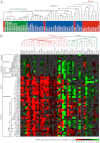
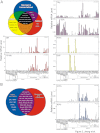

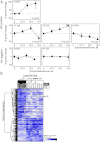
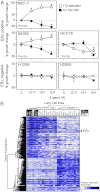
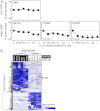
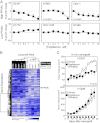
Similar articles
-
Nuclear receptor expression defines a set of prognostic biomarkers for lung cancer.PLoS Med. 2010 Dec 14;7(12):e1000378. doi: 10.1371/journal.pmed.1000378. PLoS Med. 2010. PMID: 21179495 Free PMC article.
-
Chemotherapeutic drugs induce PPAR-gamma expression and show sequence-specific synergy with PPAR-gamma ligands in inhibition of non-small cell lung cancer.Neoplasia. 2008 Jun;10(6):597-603. doi: 10.1593/neo.08134. Neoplasia. 2008. PMID: 18516296 Free PMC article.
-
Molecular profiling of afatinib-resistant non-small cell lung cancer cells in vivo derived from mice.Pharmacol Res. 2020 Nov;161:105183. doi: 10.1016/j.phrs.2020.105183. Epub 2020 Sep 5. Pharmacol Res. 2020. PMID: 32896579
-
Role of microRNAs in regulating cell proliferation, metastasis and chemoresistance and their applications as cancer biomarkers in small cell lung cancer.Biochim Biophys Acta Rev Cancer. 2021 Aug;1876(1):188552. doi: 10.1016/j.bbcan.2021.188552. Epub 2021 Apr 21. Biochim Biophys Acta Rev Cancer. 2021. PMID: 33892053 Review.
-
Molecular cross-regulation between PPAR-γ and other signaling pathways: implications for lung cancer therapy.Lung Cancer. 2011 May;72(2):154-9. doi: 10.1016/j.lungcan.2011.01.019. Epub 2011 Feb 26. Lung Cancer. 2011. PMID: 21354647 Free PMC article. Review.
Cited by
-
Targeting Nuclear Receptors in Lung Cancer-Novel Therapeutic Prospects.Pharmaceuticals (Basel). 2022 May 18;15(5):624. doi: 10.3390/ph15050624. Pharmaceuticals (Basel). 2022. PMID: 35631448 Free PMC article. Review.
-
The Involvement of PPARs in the Peculiar Energetic Metabolism of Tumor Cells.Int J Mol Sci. 2018 Jun 29;19(7):1907. doi: 10.3390/ijms19071907. Int J Mol Sci. 2018. PMID: 29966227 Free PMC article. Review.
-
Inhibition of cancer cell proliferation by PPARγ is mediated by a metabolic switch that increases reactive oxygen species levels.Cell Metab. 2014 Oct 7;20(4):650-61. doi: 10.1016/j.cmet.2014.08.003. Epub 2014 Sep 25. Cell Metab. 2014. PMID: 25264247 Free PMC article.
-
PPARγ sumoylation-mediated lipid accumulation in lung cancer.Oncotarget. 2017 Jul 31;8(47):82491-82505. doi: 10.18632/oncotarget.19700. eCollection 2017 Oct 10. Oncotarget. 2017. PMID: 29137280 Free PMC article.
-
The role of estrogen, progesterone and aromatase in human non-small-cell lung cancer.Lung Cancer Manag. 2012 Dec;1(4):259-272. doi: 10.2217/lmt.12.44. Lung Cancer Manag. 2012. PMID: 23650476 Free PMC article.
References
-
- Jemal A, Siegel R, Xu J, Ward E. 2010. Cancer statistics, 2010. CA Cancer J Clin 60:277–300 - PubMed
-
- Bhattacharjee A, Richards WG, Staunton J, Li C, Monti S, Vasa P, Ladd C, Beheshti J, Bueno R, Gillette M, Loda M, Weber G, Mark EJ, Lander ES, Wong W, Johnson BE, Golub TR, Sugarbaker DJ, Meyerson M. 2001. Classification of human lung carcinomas by mRNA expression profiling reveals distinct adenocarcinoma subclasses. Proc Natl Acad Sci USA 98:13790–13795 - PMC - PubMed
-
- Molina R, Augé JM, Bosch X, Escudero JM, Viñolas N, Marrades R, Ramírez J, Carcereny E, Filella X. 2009. Usefulness of serum tumor markers, including progastrin-releasing peptide, in patients with lung cancer: correlation with histology. Tumour Biol 30:121–129 - PubMed
-
- Raponi M, Zhang Y, Yu J, Chen G, Lee G, Taylor JM, Macdonald J, Thomas D, Moskaluk C, Wang Y, Beer DG. 2006. Gene expression signatures for predicting prognosis of squamous cell and adenocarcinomas of the lung. Cancer Res 66:7466–7472 - PubMed
-
- Spira A, Beane JE, Shah V, Steiling K, Liu G, Schembri F, Gilman S, Dumas YM, Calner P, Sebastiani P, Sridhar S, Beamis J, Lamb C, Anderson T, Gerry N, Keane J, Lenburg ME, Brody JS. 2007. Airway epithelial gene expression in the diagnostic evaluation of smokers with suspect lung cancer. Nat Med 13:361–366 - PubMed
Publication types
MeSH terms
Substances
Grants and funding
LinkOut - more resources
Full Text Sources
Medical

